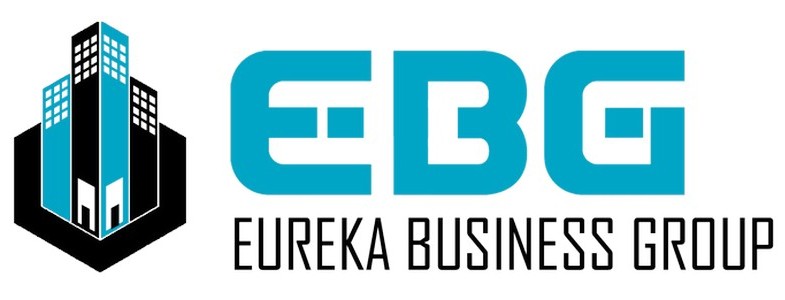- Home
- Industrial
- Industrial Investors Resources
- How to Evaluate Market Demand for Industrial Flex Spaces!
How to Evaluate Market Demand for Industrial Flex Spaces!
In today’s rapidly evolving commercial real estate landscape, industrial flex spaces have become a key area of interest for investors and businesses alike. These flexible spaces offer a unique blend of office, warehouse, and manufacturing areas, catering to a wide range of business needs. But before jumping into the industrial flex space market, it’s essential to evaluate market demand properly to ensure your investment or business decision is both timely and profitable.
This blog will walk you through the key factors to consider when evaluating market demand for industrial flex spaces, helping you make well-informed decisions.
1. Understanding Industrial Flex Spaces
Industrial flex spaces, also known as flexible-use spaces, are designed to accommodate various functions within a single building. Typically, these spaces include a mix of office areas and warehouse or light manufacturing space, giving businesses the ability to use the space in a way that suits their specific operational needs.
Industries ranging from tech startups and e-commerce companies to light manufacturers and distributors have been gravitating toward these versatile spaces because they offer adaptability, scalability, and cost efficiency.
2. Identifying Target Tenants for Flex Spaces
The first step in evaluating market demand is identifying the types of businesses that commonly seek industrial flex spaces. Different industries have varying requirements in terms of space size, location, and accessibility. Here are some common industries that tend to lease flex spaces:
- Technology Companies: These businesses often need a combination of office and lab or workshop space, making flex spaces ideal.
- E-commerce and Distribution: With the boom in online shopping, e-commerce businesses are increasingly seeking flexible spaces that offer both storage and fulfillment capabilities.
- Manufacturing: Small-scale manufacturing operations require the integration of office space with production areas, and flex spaces provide this unique advantage.
- Creative Industries: Artists, design studios, and other creative firms may use flex spaces for a mix of office, gallery, and workshop space.
Understanding the demand from these sectors is essential to knowing how viable a flex space investment will be in your specific market.
3. Analyzing Local Market Trends
To evaluate demand, it’s crucial to stay informed about local and national market trends. Here are key indicators to track:
A. Vacancy Rates
Vacancy rates in your area are a direct indicator of how much demand there is for industrial flex spaces. A high vacancy rate could signal oversupply, while a low vacancy rate indicates strong demand. Analyze vacancy rates both within your city and region to get a clear picture of whether there’s a shortage or surplus of these types of spaces.
B. Rental Rates
Pay attention to rental rates in the flex space market. If rents are increasing steadily, this suggests demand is outpacing supply. Conversely, if rents are stagnant or falling, it may signal a lack of demand in the area.
C. Absorption Rates
Absorption rate measures the amount of available industrial flex space leased within a specific period. A high absorption rate indicates strong demand and suggests that spaces are quickly being taken off the market, while a low absorption rate suggests a slower market.
D. New Development Projects
Look at any new construction or planned developments of industrial flex spaces in your area. If many projects are in the pipeline, this could either signal strong demand or an impending oversupply. It’s crucial to balance this with absorption and vacancy rates to get the full picture.
4. Evaluating the Local Business Climate
A region’s business environment plays a significant role in shaping demand for industrial flex spaces. Evaluate the following factors to gauge market demand:
A. Economic Growth
Strong economic growth in a city or region is often accompanied by increased demand for commercial real estate. Areas with a booming economy are likely to see more businesses starting up or expanding, which directly impacts demand for flex spaces.
B. Industry Presence
The presence of key industries that frequently use flex spaces can drive demand. For example, areas with a high concentration of tech companies, manufacturing firms, or distribution centers are likely to have more businesses seeking out these flexible spaces.
C. Job Growth
An area experiencing job growth is a good indicator of a thriving business environment. The more jobs being created, especially in industries like technology, logistics, and manufacturing, the more likely businesses will seek new or expanded flex spaces to accommodate their growth.
D. Government Incentives
Local government incentives can also affect demand. Tax breaks, grants, and other incentives to attract new businesses to a region often create increased demand for flexible spaces. Look into economic development initiatives in your area that encourage business expansion.
5. Assessing Location Factors
Location is a key determinant of the demand for industrial flex spaces. When evaluating a potential market, consider these factors:
A. Proximity to Transportation Hubs
Industrial flex spaces are often sought after by businesses that require easy access to transportation networks. If your property is located near major highways, airports, or ports, it becomes more attractive to businesses involved in logistics, distribution, or manufacturing.
B. Accessibility to Workforce
Businesses need to consider the availability of skilled labor when choosing a location. If your property is in a region with a large pool of qualified workers, it’s more likely to attract companies that require office, manufacturing, or warehouse space.
C. Amenities
Amenities like ample parking, nearby dining options, and proximity to other businesses are important to tenants. Flex spaces located near urban centers or in business parks that offer convenient amenities tend to be in higher demand.
6. Understanding Tenant Needs and Flexibility
Businesses seek industrial flex spaces for their adaptability, but it’s important to understand exactly what tenants in your market are looking for. Consider offering features that increase the appeal of your flex space, such as:
- Customizable Layouts: Tenants value the ability to modify a space to suit their business operations, whether it’s more office space, added storage, or workshop areas.
- Scalability: Tenants may need to expand or reduce their space as their business grows or contracts. Offering flexibility in lease terms and space options can attract long-term tenants.
- Modern Facilities: Updated HVAC systems, energy-efficient lighting, and high-speed internet connectivity are non-negotiable for most modern businesses. Properties with up-to-date amenities will be in higher demand.
7. Examining Competition and Supply
Understanding the competitive landscape is vital. Examine existing industrial flex spaces in your area and assess:
- What types of businesses occupy them?
- What features or amenities do they offer?
- What are the current occupancy levels?
This analysis will help you identify gaps in the market or areas where demand is unmet. For example, if most flex spaces in the area cater to large companies, there may be an opportunity to target smaller businesses with more affordable, customizable options.
8. Market Demand and Long-Term Viability
Finally, evaluating the long-term demand for industrial flex spaces requires considering both current trends and future projections. Industries such as e-commerce, last-mile distribution, and technology are likely to continue growing, driving demand for these flexible spaces. However, it’s essential to stay aware of potential shifts in the market, such as changes in industry practices or technological advances that could impact the types of spaces businesses need.
Conclusion
Industrial flex spaces offer a unique opportunity for investors and businesses, but evaluating market demand is crucial to ensuring a successful venture. By understanding local market trends, the business climate, location factors, and tenant needs, you can make informed decisions about whether industrial flex spaces are a sound investment in your area.
By conducting thorough research and staying attuned to changes in demand, you can capitalize on this growing sector of commercial real estate while providing businesses with the flexibility they need to thrive.



